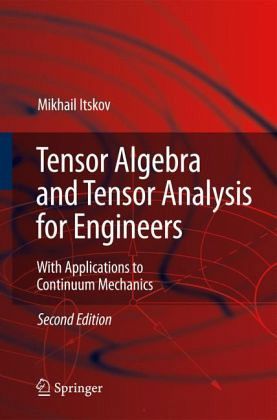Nicht lieferbar

Tensor Algebra and Tensor Analysis for Engineers
With Applications to Continum Mechanics
Versandkostenfrei!
Nicht lieferbar
Ideal for engineering students with some knowledge of matrix algebra, this text bridges the gap between tensor algebra and the treatment of linear transformations in classical linear algebra. This revised second edition has additional examples and exercises.
There is a large gap between the engineering course in tensor algebra on the one hand and the treatment of linear transformations within classical linear algebra on the other hand. The aim of this modern textbook is to bridge this gap by means of the consequent and fundamental exposition. The book is addressed primarily to engineering students with some initial knowledge of matrix algebra. Thereby the mathematical formalism is applied as far as it is absolutely necessary. Numerous exercises provided in the book are accompanied by solutions enabling an autonomous study. The last chapters of the book deal with modern developments in the theory of isotropic and anisotropic tensor functions and their applications to continuum mechanics and might therefore be of high interest for PhD-students and scientists working in this area.
This second edition is completed by some additional examples and exercises. The text and formulae are thoroughly revised and improved where necessary.
Many additional examples and tasks have resulted from student s questions and suggestions. Besides, the text and formulas have been reviewed thoroughly and corrected where necessary.
This second edition is completed by some additional examples and exercises. The text and formulae are thoroughly revised and improved where necessary.
Many additional examples and tasks have resulted from student s questions and suggestions. Besides, the text and formulas have been reviewed thoroughly and corrected where necessary.




